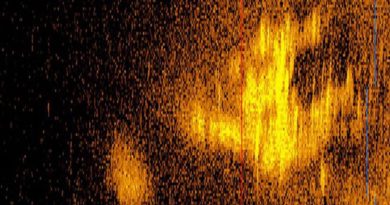Inside the ‘most polluted city in world’ with smog so bad residents rarely see the sky | World | News
Lahore, Pakistan, the second-largest city in the country, has earned the dubious distinction of having the most polluted air on the planet. For almost two months, the sun has been absent, concealed by a thick layer of smog that settles in during the winter months, transforming the city of over 13 million people into a place where residents rarely catch a glimpse of the sky.
Pakistani writer Mariam Shah, living in an affluent residential area on the outskirts of Lahore, described the situation: “My daughters didn’t go outside during the holidays because, in addition to the smog, it was colder than usual.”
The severity of the pollution prompted closures during the Christmas holidays, affecting schools, restaurants, shops, and gyms, aiming to curb the spread of conjunctivitis. Later, planes were dispatched to disperse dry ice and silver iodide in an attempt to create “artificial rain” and mitigate the crisis.
Abid Omar, a Pakistani engineer and founder of the independent Pakistan Air Quality platform, emphasised the gravity of the situation saying: “This is not fog, it is pollution. Fog does not cause health problems.”
The air pollution in Lahore reaches levels 70 times higher than those recommended by the World Health Organisation (WHO), with fine particulate pollutants causing respiratory and circulatory issues.
The impact of Lahore’s severe air pollution extends beyond immediate health concerns. Daily life is disrupted at all levels, causing delays at the airport, an increase in hospital admissions for asthma, and a decline in work productivity. Abid Omar attributes the problem to the growing car fleet in Pakistan, particularly vehicles running on poor-quality petrol, such as diesel.
In the South Asian region, polluted air stands as the leading cause of death, surpassing malnutrition, smoking, and hypertension, with 2.2 million deaths annually. Factors contributing to this alarming statistic include inadequate waste management, burning of crop residues, and household pollution, with up to 28 percent of micro-particulates originating from homes.
As winter exacerbates the situation, factors like increased transport, heightened use of private vehicles, and intensified production in brick factories contribute to rising pollution levels. Additionally, the thermal inversion effect, a phenomenon linked to the city’s proximity to the Himalayas, traps pollution in the lower layers, worsening the crisis.
With the arrival of spring, historically known as the season of gardens in Lahore, concerns about extreme heat and potential impacts of climate change on pollution levels loom large. Rising temperatures may lead to more ozone pollution, triggering the formation of fine particles in the air and disrupting cloud formation, potentially delaying the monsoon season.





